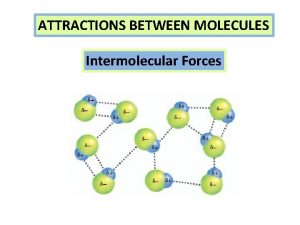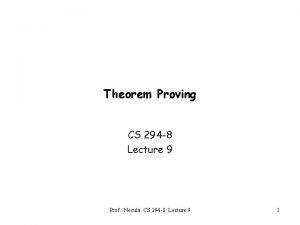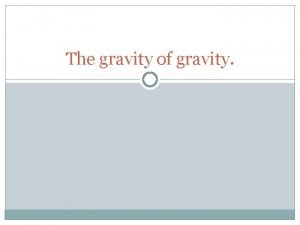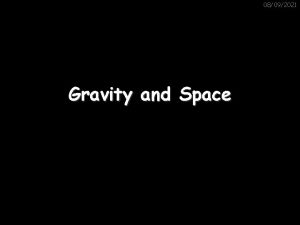Gravity Simulation Gravity is the weakest of the








- Slides: 8

Gravity Simulation

Gravity is the weakest of the four fundamental forces. Gravity is responsible for the attraction of massive bodies. Gravitational force is always attractive and acts along the line joining the centres of mass. Gravitational force is responsible for the formation of planets, stars and galaxies. Gravity decides the orbital paths of the planets and moons in our solar system. National Schools’ Observatory

Newton’s Law of Universal Gravitation The gravitational force between the two masses m 1 and m 2 is described by Newton’s Law of Universal Gravitation. G is the universal gravitation constant. This relationship is an example of an inverse square law force. Forces are equal in size but in opposite directions. National Schools’ Observatory

Setting up the Experiment • This learning scenario requires flash player 10. • Go to http: //get. adobe. com/flashplayer/ to download and install this software. • Extract the gravitysim. zip. • Run gravitysim. swf. • To carry out the experiment you will also need a stopwatch. National Schools’ Observatory

The Experiment Drop the ball from a set distance and measure the time it takes to hit the bottom of the box. Repeat your measurements several times and record them on the worksheet. Repeat for each of the nine environments which have gravity. Experiment with how the ball reacts in each of the environments by throwing the ball with the mouse and note how this differs from Earth. Analyse the results to obtain the value of the acceleration due to gravity for each planet. National Schools’ Observatory

Analysing the Results Values for the release height and the time taken to fall can be used to calculate the acceleration due to gravity for each of the planets. If it assumed that there is no air resistance and no other downward force, the acceleration due to gravity g is equal to a. Eq. 1 Where: S = Displacement u = Initial velocity a = Acceleration t = Time Since the ball has no initial velocity, u = 0, the displacement, S, can be treated as the drop height, h. Eq. 2 (Eq. 1) can then be rearranged to allow calculation of the acceleration due to gravity (Eq. 2). National Schools’ Observatory Where: h = Drop height g = acceleration due to gravity t = Time

Discussion after Experiment In terms of gravity, which of the environments are most like Earth and which are the most different? Why does gravity vary on other planets? Was the gravity more difficult to measure on some planets more than others? What are the sources of error? Was there more variation in your results in certain environments? National Schools’ Observatory

Questions, Exercises and Tasks Use the internet to find the difference in the diameter of Uranus and Earth? Given the large difference in diameter, why is the gravity relatively similar? If a man weighs 80 Kg on Earth, how much will he weigh on the other planets in the Solar System? Look up the other equations of motion, what other systems could they be applied to? Investigate some of the ways that the value of the gravitational constant, G, can be experimentally determined. National Schools’ Observatory
 Molecular attractions
Molecular attractions Intramolecular forces vs intermolecular
Intramolecular forces vs intermolecular Weakest preconditions
Weakest preconditions The weakest agent of erosion
The weakest agent of erosion Strongest to weakest intermolecular forces
Strongest to weakest intermolecular forces Dipole dipole interaction example
Dipole dipole interaction example Intermolecular forces in sugar
Intermolecular forces in sugar Strongest to weakest intermolecular forces
Strongest to weakest intermolecular forces What are the weakest attractions between molecules
What are the weakest attractions between molecules















